This is a pretty self explanatory category typically composed of graphic novels and trade paperbacks. The big story of 2019 is how stagnant the selection is; half of the Graphic Story slate has been locked in since 2017, in the form of Saga (six time nominee), Monstress (two time winner), and Paper Girls.1 Fortunately two of the repeats (Monstress and Saga) were my top picks of last year, so it is hard to begrudge them their perennial status.
Before starting I’ll also offer up an apology, while I love comics and graphic novels, graphic art is not my strong point, and while I make the effort to discuss the graphic part of graphic story, it will largely boil down to like/didn’t notice/disliked. Also given that three of the series are at books 9, 3, and 4 respectively, I will only be addressing volume specific points, and spoilers of past volumes are almost inevitable. All three of the repeat series are worth reading and require starting at the beginning, so you can just skip the reviews and go straight to them.2
Abbott by Saladin Ahmed, art by Sami Kivelä, colours by Jason Wordie, letters by Jim Campbell
A journalist fights racism and magic in 70s Detroit.
You can’t go past a good high concept, and Blaxploitation Call of Cthulhu is a pretty great high concept. What rapidly becomes apparent is that Ahmed has aspirations beyond kick ass action comics, and is engaging with more than the superficial trappings of blaxploitation. It starts with the setting – 70s Detroit in washed out colours, newspaper headlines, and near ubiquitous smoking. Everywhere we visit in the story we see divisions along race, gender a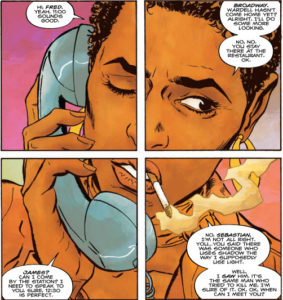 nd class, and the genius at work here is to carry these divisions over to the supernatural.
nd class, and the genius at work here is to carry these divisions over to the supernatural.
At the centre of all this we have the titular character. Abbott is the archetypal Blaxploitation hero, smarter, tougher, and cooler than anyone around her,3 fighting the man but still worn down by it. The art really helps here, selling emotions ranging from abject terror to outright bad assery.4 The comic lives and dies on her character, and she is as interesting sitting in a diner as fighting magical horrors.
None of this is to say Abbott is perfect: I initially had trouble getting into it because I found the dialogue so stilted; Abbott is well written as a smart character, but seems to take an inordinate amount of time to make some fairly obvious connections; and the resolution of the story felt extremely rushed.5 Still, it lives up to its high concept, and has a little more going on under the hood.
Race, Class and Cthulhu are well worth reading.
Black Panther: Long Live the King by Nnedi Okorafor and Aaron Covington, art by André Lima Araújo, Mario Del Pennino and Tana Ford
Black panther faces his greatest challenge, peaceful libertarian Luddite democracy.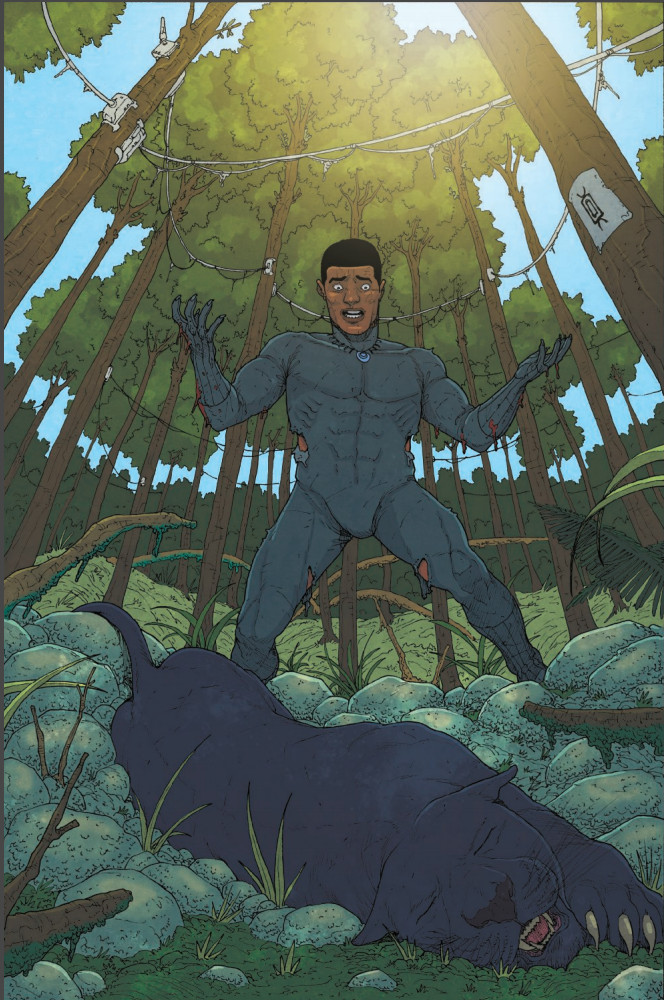
I hated the art. Usually I try to find the good in something before trashing it, but the art in the first arc of this volume was so off putting that I couldn’t loose myself in the story.6 There are a number of good ideas in these issues, from off the grid Wakandan communities through to a fight between Black Panther, and well, a black panther, but they didn’t work for me, and I honestly can’t say if this is due to weaknesses of the story or the art. The rest of the issues were solidly average, though again I liked the idea of “Under the Bridge” a lot more than the execution.
Bad art and weak execution mar some good ideas.
On a Sunbeam by Tillie Walden
A girl joins a restoration team swimming through space on a goldfish.
Buildings standing in space, goldfish ships, faded purples and blacks broken by rainbows of stars. There is something magical about the art of On a Sunbeam, and it shows the power of the graphic novel that no suspension of disbelief is necessary for this world because it is all out there on the page. Indeed I lost myself so thoroughly in the story that I was a few chapters in before I noticed the lack of men.
On a sunbeam is more a feeling th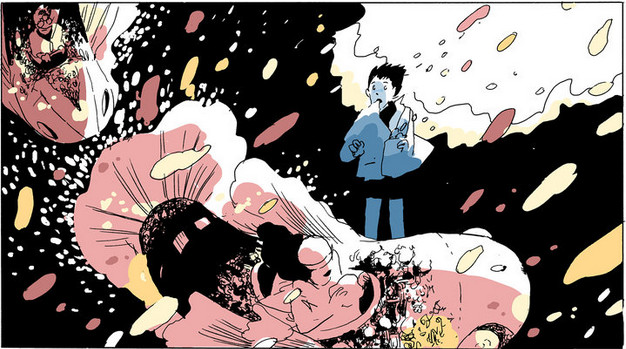 an a story, it is about love, and identity, and finding your place in the world. It draws its power from showing not telling, and hiding in magical realism the aspiration of a better world.
an a story, it is about love, and identity, and finding your place in the world. It draws its power from showing not telling, and hiding in magical realism the aspiration of a better world.
It would be a perfect little dream except for a couple of minor dents. The art style, while perfect for what the book is trying to achieve, can sometimes obscure details, particularly the ages of the core group of characters. There is also one section where Walden reverts to telling not showing, with an argument over pronouns that feels out of context with the rest of the story.
The comic equivalent of a beautiful dream.
Monstress, Volume 3: Haven by Marjorie Liu, art by Sana Takeda
Monstress still has the most beautiful art in the category, and it really leans into the steampunk fantasy aesthetic in this issue. Unfortunately this is a textbook victim of decompression in long running series; evaluating this feels about as fair as evaluating chapter three of a novel. I liked this volume, and when Liu finishes Monstress, I will be happy reading it as part of the run, but it feels like a piece of a larger story rather than an entirely self contained episode.
Paper Girls, Volume 4 by Brian K. Vaughan, art by Cliff Chiang, colours by Matt Wilson, letters by Jared K. Fletcher
I’m beginning to think that volume 2 might have been an aberration in quality, rather than evidence of an upward trajectory in quality. Volume 4 feels very much like the last volume, however the focus here is on fleshing out the meta-plot of who is fighting over the timeline and why. It’s solid, with a soupcon of giant robot battling, but given my difficulties in keeping up with graphic stories, this would probably be my exit point from the series if I was a regular reader.
Saga, Volume 9 by Brian K. Vaughan, art by Fiona Staples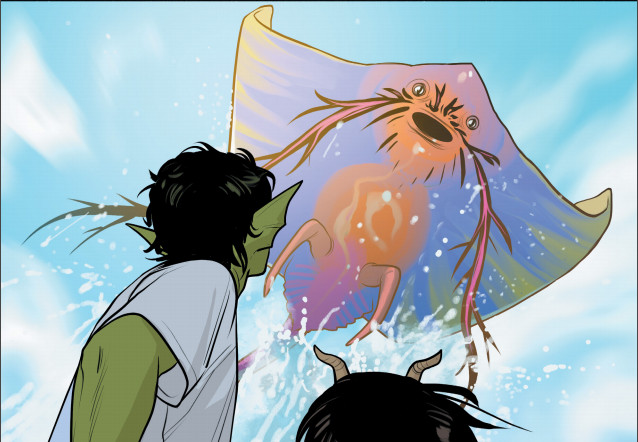
For the last two years, Monstress has pipped Saga at the post for me. This year, I don’t know how Vaughan does it. Each Volume of Saga feels essential, and the creative team does a good job of varying the tone between volumes – the last volume ended on an upbeat note, while this one is another kick to the guts. 7
Hugo Ballot
- Saga
- On a sunbeam
- Monstress
- Abbott
- Paper Girls
- Black Panther
Last year I complained that it broke my heart to not rank Saga first, this year it takes it in a walk. The next three spots are pretty tight and may get shuffled between now and final ballot; they are all good stories, but make no mistake, if it was based on series rather than volume, Monstress would move clear of the other two. Meanwhile Paper Girls sets the bar at good, but not for me, and Black Panther was just bad (except for the last issue, which was OK).
- And if we are a bit mean in our stereotyping, the whole list of nominees looks remarkably similar to last year (Saga, Monstress, Paper Girls, Marvel Comic, Indie Trade, Indie Graphic Novel).
- While Saga and Monstress Volumes 1 are stone cold classics, if you find yourself on the fence after Paper Girls Volume 1, Volume 2 is a big step up.
- Though some of her supporting cast, particularly her editor and ex, are pretty cool in their own right.
- And the action here, while infrequent, is extremely effective, with at least one moment that is too good to spoil.
- Which is odd since it appears to be a continuing series.
- Del Pennino and Ford’s art in the later issues is a definite step up.
- It’s also not strictly relevant, but last year Volume 7 was nominated, so I read volume 8 in preparation for this one. In volume 8 there is a similar discussion of trans identity to “On a sunbeam”, but it feels organic to the story and achieves its goals more successfully.
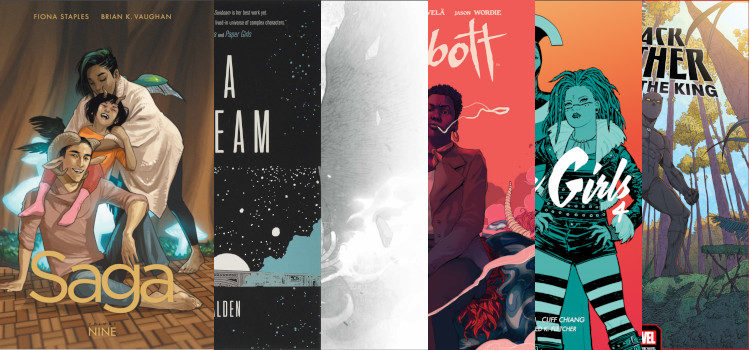
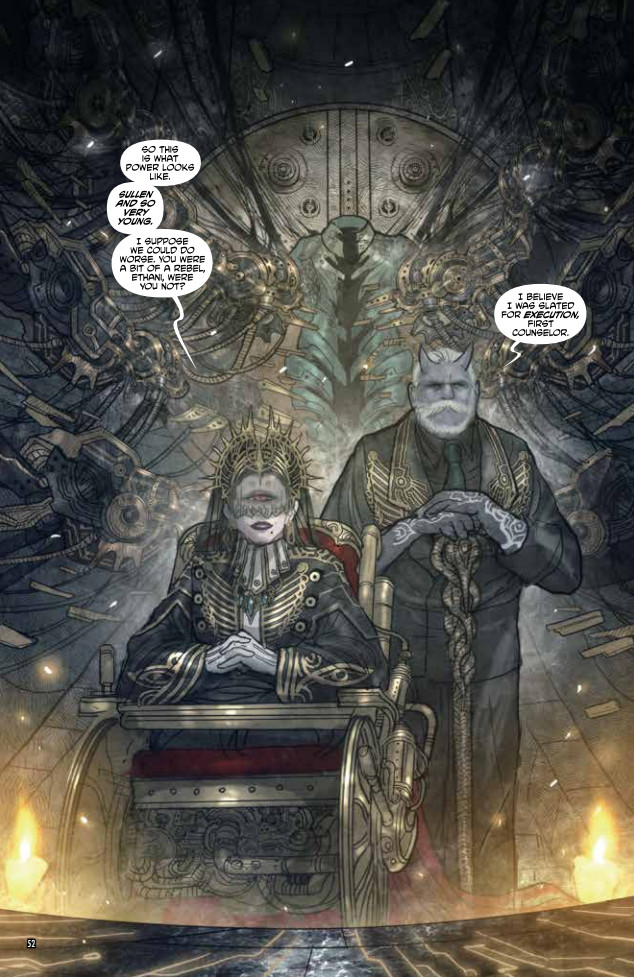
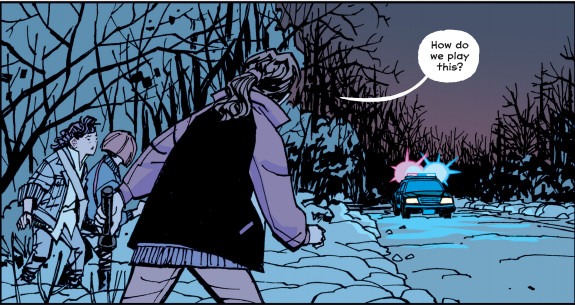
One thought to “Hugo Awards Extravaganza 2019 -Graphic Story”